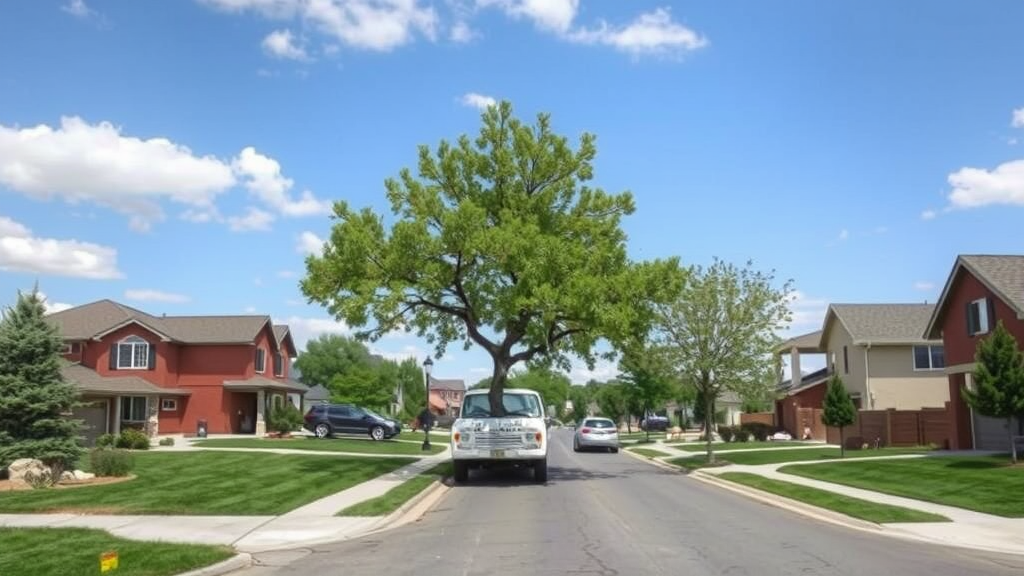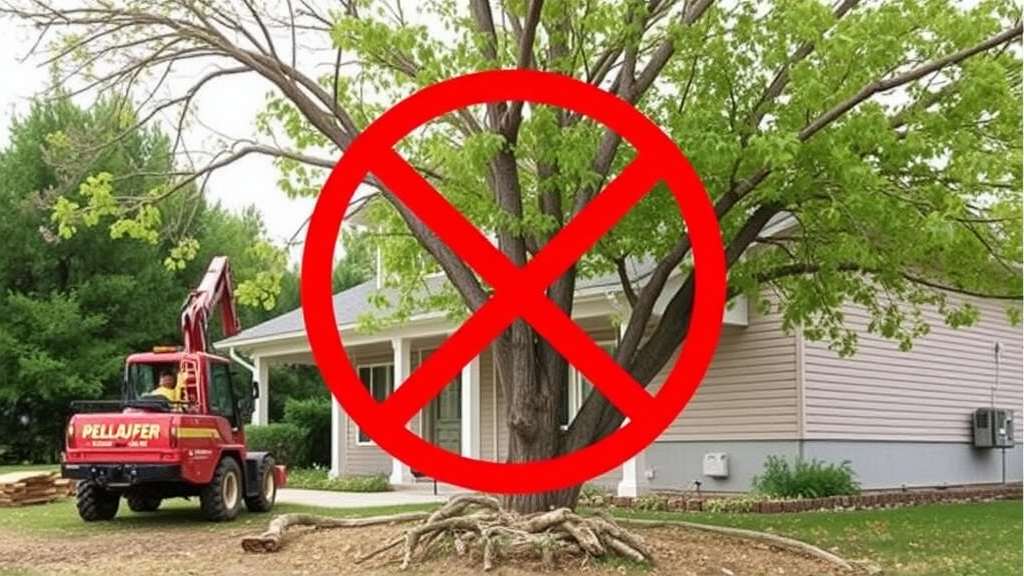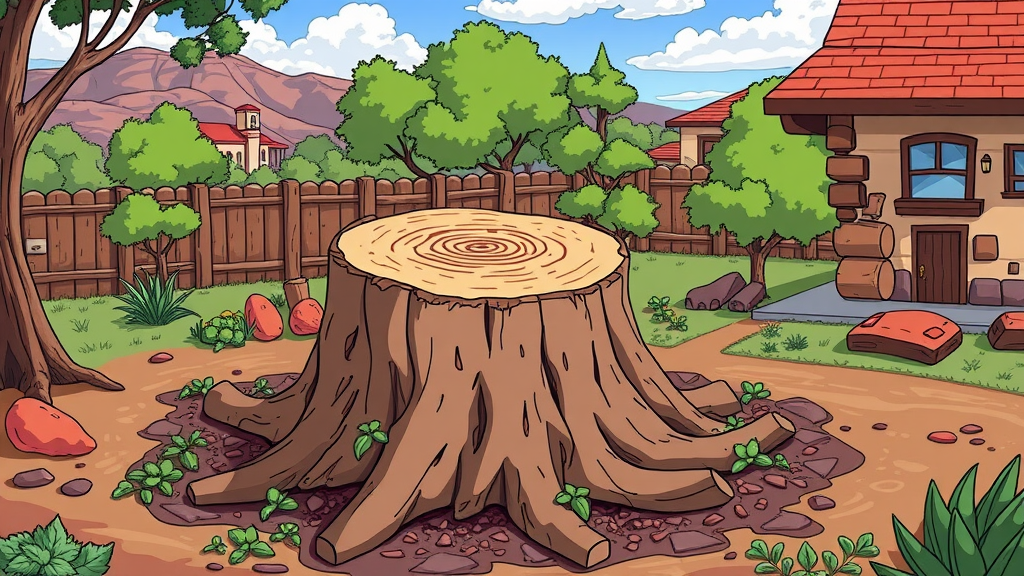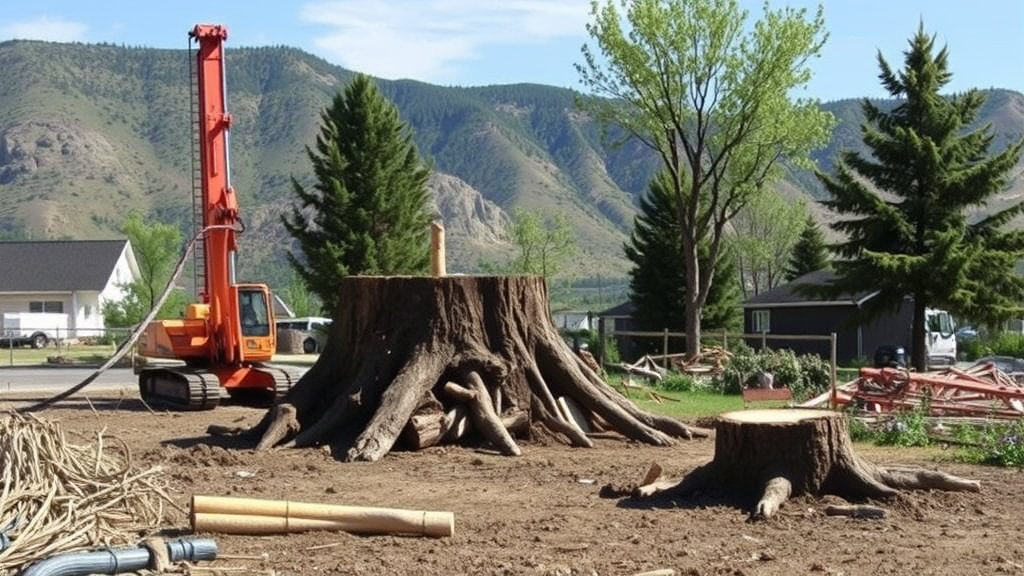6 Things To Help Your Trees Thrive In The Summertime

If you need a tree service in Utah, you can call:
Truco Services, Inc.
4640 Commerce Drive
Murray, Utah 84107
(801) 466-8044
https://truetreeservices.com/
6 Things To Help Your Trees Thrive in the Summertime
Summer is a crucial time for tree care, as the warm weather and increased sunlight create ideal conditions for growth. Ensuring that your trees thrive during the summertime requires proper attention and care. Here are six essential tips to help your trees flourish and stay healthy throughout the summer months.
- Regular Watering: Proper hydration is vital for trees to thrive in the summer heat. Be consistent with watering, especially during dry periods. Deep watering is preferable as it encourages deep root growth. Consider using a drip irrigation system to ensure a slow, consistent supply of water directly to the root zone.
- Mulching: Mulch acts as a protective layer for the soil, helping to retain moisture and regulate soil temperature. Apply a 2–4 inch layer of organic mulch around the base of the tree, keeping it a few inches away from the trunk. Mulching also helps suppress weed growth that competes with the tree for nutrients.
- Pruning: Regular pruning is essential for tree health and growth. Remove any dead, diseased, or crossing branches to promote air circulation and sunlight penetration. Summer is an ideal time for light pruning to shape the tree and remove any unwanted growth. However, avoid heavy pruning during the summer months to prevent stress on the tree.
- Fertilization: Providing essential nutrients to your trees through fertilization is key to maintaining their health. Consider having your soil tested to understand its nutrient composition and fertilization needs. Select a balanced slow-release fertilizer and apply it according to the manufacturer’s instructions to avoid over-fertilization, which can harm the tree.
- Pest and Disease Control: Keep an eye out for common pests and diseases that can affect trees during the summer. Regularly inspect your trees for any signs of infestation or disease, such as unusual spots on leaves or pest activity. Consider implementing preventive measures like dormant oil sprays or insecticidal soaps to protect your trees.
- Sunlight Exposure: While trees require sunlight for photosynthesis, excessive exposure to intense sunlight can cause stress and damage. Monitor your trees for signs of sunscald, such as cracked bark or wilting leaves. Consider planting new trees in locations that provide adequate shade during the hottest parts of the day.
By following these six essential tips, you can help your trees thrive in the summertime. Remember that each tree species may have specific care requirements, so it’s essential to research the particular needs of your trees. With proper watering, mulching, pruning, fertilization, pest control, and sunlight exposure management, your trees will be well-equipped to flourish and stay healthy throughout the summer season.
Importance of Proper Watering Techniques for Tree Care
Proper watering techniques are essential for the health and well-being of trees, especially during the hot summer months. Trees require an adequate amount of water to thrive and withstand the heat stress that comes with summertime. Here are some key strategies to help you ensure that your trees receive the right amount of water to flourish during this season.
- Water Deeply and Infrequently: When it comes to watering trees, it is crucial to water deeply but less frequently. This method encourages the tree’s roots to grow deeper into the soil in search of water. Deep watering promotes a strong and healthy root system that can better support the tree during hot and dry periods.
- Bluebell Tree Services Truco
- Use Mulch: Applying a layer of mulch around the base of the tree helps retain moisture in the soil, prevent evaporation, and regulate soil temperature. Mulch also acts as a barrier against competing weeds that can steal water and nutrients from the tree. Make sure to spread mulch evenly around the tree but avoid piling it up against the trunk.
- Water in the Morning: Watering your trees in the early morning allows the moisture to penetrate the soil before the sun is at its peak. This timing helps prevent water loss through evaporation and ensures that the tree has ample moisture to endure the heat of the day. Avoid watering in the evening as damp foliage overnight can promote the growth of diseases.
- Monitor Soil Moisture: Keeping track of the soil moisture levels around your trees is essential for effective watering. You can use a moisture meter to assess the moisture content of the soil. Alternatively, you can simply insert a screwdriver into the soil — if it goes in easily, the soil is moist. Adjust your watering schedule based on the moisture levels to prevent overwatering or underwatering.
- Consider Tree Type and Age: Different tree species have varying water requirements, so it is essential to understand the specific needs of the trees in your landscape. Young trees typically need more frequent watering as their root systems are still developing. Mature trees, on the other hand, may require less frequent watering once they are established.
- Rainwater Harvesting: Take advantage of natural rainfall by setting up a rainwater harvesting system. Collecting rainwater in barrels or cisterns provides you with a sustainable water source for your trees. Rainwater is free of chemicals like chlorine, making it a healthier option for watering your trees.
By following these watering techniques, you can help your trees thrive in the summertime and ensure they remain healthy and vibrant throughout the season. Proper watering practices not only benefit the individual trees in your landscape but also contribute to the overall health of the ecosystem. Remember that maintaining adequate soil moisture levels is key to the long-term survival and growth of your trees.
Understanding the Significance of Mulching in Tree Health
Mulching plays a crucial role in maintaining the health and vitality of trees, providing a range of benefits that contribute to their overall well-being. Understanding the significance of mulching in tree health is essential for homeowners and gardeners looking to promote optimal growth and longevity in their trees.
Retaining Soil Moisture
Mulching helps to retain soil moisture, creating a more stable environment for tree roots to access water. By acting as a barrier between the soil and the atmosphere, mulch reduces water evaporation, ensuring that the roots receive an adequate supply of moisture. Especially during the hot summer months, when trees are more prone to drying out, mulching can help maintain the necessary hydration levels for healthy growth.
Regulating Soil Temperature
In the summertime, trees can be vulnerable to extreme temperatures that may stress their root systems. Mulch acts as a natural insulator, helping to regulate soil temperature by keeping it cooler in the heat of the day and warmer during cool nights. This temperature moderation supports root health and enables trees to better withstand the fluctuations of summer weather.
Suppressing Weed Growth
Weeds competing with trees for essential nutrients and water can hinder their growth and development. Mulching serves as a natural weed suppressant, creating a barrier that inhibits weed germination and growth. By reducing weed competition, trees can allocate more resources towards their own growth, leading to stronger and healthier plants.
Improving Soil Structure
Over time, mulch breaks down and decomposes, enriching the soil with organic matter that enhances its structure and fertility. This improved soil quality allows tree roots to penetrate more easily, access nutrients more readily, and promote overall growth and vitality. By adding organic material to the soil, mulching contributes to the long-term health of trees in the summertime and beyond.
Preventing Soil Compaction
Soil compaction can restrict root growth and limit the uptake of water and nutrients by trees. Mulching helps to prevent soil compaction by acting as a cushion that absorbs the impact of heavy rain and foot traffic. By maintaining soil structure and aeration, mulch promotes root development and allows trees to thrive in optimal growing conditions.
Enhancing Landscape Aesthetics
In addition to its functional benefits, mulch also enhances the aesthetic appeal of a landscape. With a variety of mulch materials and colors available, homeowners can choose options that complement their existing plantings and design preferences. Mulching not only improves tree health but also adds visual interest to outdoor spaces, creating a more attractive and well-maintained environment.
Mulching is a simple yet effective practice that plays a significant role in supporting tree health during the summertime. By retaining soil moisture, regulating temperature, suppressing weeds, improving soil structure, preventing compaction, and enhancing aesthetics, mulch provides a range of advantages that contribute to the overall well-being and longevity of trees. Homeowners and gardeners can harness the power of mulching to promote healthy growth, resilience, and beauty in their landscape.
Pruning Tips to Promote Growth and Tree Health
Summertime is a crucial period for your trees’ growth and overall health. To ensure your trees thrive during this season, it is essential to implement specific practices that can support their well-being. Here are six things you can do to help your trees flourish in the summertime:
Watering: Proper watering is fundamental for tree health, especially in the hot summer months. Trees need an adequate amount of water to survive and thrive. Make sure to water your trees deeply but infrequently. A slow, deep watering encourages deep root growth and helps trees withstand drought conditions. Consider using a drip irrigation system or soaker hoses to provide water directly to the root zone.
Mulching: Mulching is another essential practice for promoting tree health in the summer. A layer of organic mulch around the base of the tree helps retain soil moisture, regulate soil temperature, and suppress weed growth. Additionally, mulch can improve soil structure as it decomposes, providing essential nutrients to the tree roots.
Pruning: Proper pruning is crucial for promoting growth and tree health. Summer is an ideal time to prune trees to remove dead, damaged, or diseased branches. Pruning can improve air circulation within the canopy, reduce the risk of pest infestations, and promote new growth. Be sure to use sharp, clean pruning tools and techniques to make precise cuts without causing damage to the tree.
Fertilizing: Fertilizing your trees in the summer can provide them with essential nutrients to support growth and overall health. Consider conducting a soil test to determine any nutrient deficiencies and select a fertilizer that meets your tree’s specific needs. Apply fertilizer according to the manufacturer’s instructions, taking care not to over-fertilize, which can harm the tree.
Pest Control: Summer is a peak season for pests that can damage trees. Monitor your trees regularly for signs of pest infestations, such as leaf discoloration, wilting, or visible insects. Consider using organic pest control methods, such as beneficial insects or horticultural oils, to manage pest populations without harming beneficial wildlife.
Monitoring: Regular monitoring of your trees’ health is essential during the summer months. Look for signs of stress, such as wilting leaves, leaf scorch, or early leaf drop. Address any issues promptly to prevent further damage and promote tree recovery. Consider consulting with a certified arborist for professional guidance on tree care practices.
By implementing these six practices, you can help your trees thrive in the summertime and ensure their long-term health and vitality. Proper watering, mulching, pruning, fertilizing, pest control, and monitoring are essential components of a comprehensive tree care routine that can support your trees’ growth and well-being throughout the summer season.
Identifying and Addressing Common Summertime Tree Pests and Diseases
Summer is a wonderful time when trees are full of life, providing shade and beauty to our surroundings. However, during this season, trees are vulnerable to various pests and diseases that can hinder their growth and overall health. Identifying and addressing these common summertime tree pests and diseases is crucial to ensure your trees thrive and remain vibrant throughout the summer months.
Identifying Tree Pests and Diseases
Several pests and diseases can affect trees during the summer. One common pest is the aphid, which feeds on tree sap, causing leaves to curl and yellow. Another troublesome pest is the spider mite, which sucks sap from leaves, leading to discoloration and stunted growth. Fungal diseases like powdery mildew and root rot can also take a toll on trees during the summer, manifesting as white powdery patches on leaves or wilting and discolored foliage.
Signs of Infestation
Identifying the early signs of infestation is crucial in managing tree pests and diseases effectively. Look out for discolored or distorted leaves, unusual spots or patterns on the foliage, premature leaf drop, and the presence of webs or unusual growths on the tree. Additionally, inspect the bark for signs of damage, such as holes or oozing sap, which may indicate the presence of borers or other destructive pests.
Prevention and Management Strategies
- Regular Inspections: Conduct frequent inspections of your trees to spot any signs of pests or diseases early on.
- Pruning: Proper pruning helps improve air circulation and sunlight penetration, reducing the risk of fungal diseases.
- Watering: Ensure your trees receive adequate water, especially during hot summer months, to prevent stress and susceptibility to pests.
- Mulching: Apply a layer of mulch around the base of trees to retain moisture and regulate soil temperature, promoting overall tree health.
- Natural Predators: Encourage beneficial insects like ladybugs and lacewings that feed on pests, helping to keep populations in check.
- Treatment: In cases of severe infestations, consider using organic or chemical treatments under professional guidance to combat pests and diseases effectively.
Importance of Timely Action
Addressing tree pests and diseases promptly is vital to prevent further damage and preserve the health of your trees. Delayed action can lead to irreversible harm, impacting the aesthetics and structural integrity of the tree. By staying vigilant and taking proactive measures, you can protect your trees from pests and diseases, ensuring they thrive and flourish during the summer season.
Proactive monitoring, early detection, and timely intervention are key to identifying and addressing common summertime tree pests and diseases. By implementing preventive strategies and promptly managing infestations, you can safeguard the health and vitality of your trees, allowing them to thrive and contribute to the beauty of their environment throughout the summer months.
Key Takeaway:
In order to ensure your trees thrive during the summertime, it is essential to implement a holistic approach to tree care. By incorporating proper watering techniques, understanding the significance of mulching, utilizing pruning tips, and effectively addressing common summertime tree pests and diseases, you can promote the health and growth of your trees.
Proper watering is crucial for maintaining the health of your trees, especially during the hot summer months. It is important to water deeply and infrequently to encourage deep root growth. This helps trees withstand drought conditions and remain healthy throughout the season.
Mulching plays a key role in tree health by helping to retain moisture in the soil, regulate soil temperature, and prevent weed growth. Applying a layer of mulch around the base of your trees can provide numerous benefits, including improving soil structure and fertility.
Pruning is another essential aspect of tree care that can promote growth and overall tree health. By removing dead or diseased branches, shaping the tree to improve sunlight exposure, and promoting proper air circulation, pruning can help trees thrive in the summertime.
Identifying and addressing common summertime tree pests and diseases is crucial to preventing damage and promoting tree health. Keep an eye out for signs of infestation or disease, such as discoloration, unusual spots, or pest activity, and take prompt action to address the issue.
By incorporating these key strategies into your tree care routine, you can ensure that your trees not only survive but thrive during the summertime. Remember, healthy trees not only enhance the beauty of your landscape but also provide numerous environmental benefits. Prioritize the health of your trees to enjoy their beauty and benefits for years to come.
Conclusion
In summation, ensuring the optimal health and vitality of your trees during the summertime involves a holistic approach that encompasses various aspects of care and maintenance. By implementing the six key strategies discussed — proper watering techniques, mulching practices, effective pruning tips, and proactive measures against pests and diseases — you can create an environment where your trees not only survive but thrive. Remember that each tree species has its own unique requirements, so it’s essential to research and understand the specific needs of the trees in your garden or landscape.
Proper watering techniques are foundational to tree care, especially during the hot and dry summer months. By providing deep, infrequent waterings and avoiding shallow watering that can lead to root stress, you can ensure that your trees receive the hydration they need to flourish. Additionally, mulching serves as a protective barrier, helping to retain soil moisture, regulate soil temperature, and suppress weed growth. When mulched correctly, trees can better withstand the summer heat and maintain their health.
Pruning is another crucial aspect of tree maintenance that promotes growth, structural integrity, and overall health. By understanding the basics of pruning, such as knowing when and how to prune, you can encourage strong branch development and enhance the aesthetic appeal of your trees. However, it is essential to prune with caution and avoid over-pruning, as this can weaken the tree and make it more susceptible to stress and disease.
Furthermore, being vigilant about common summertime tree pests and diseases is vital to safeguarding your trees from potential threats. By regularly inspecting your trees for signs of infestation or infection, you can take prompt action to address issues before they escalate. Whether it’s identifying symptoms of pest damage or implementing preventative measures to ward off diseases, staying proactive can help preserve the health and longevity of your trees.
By incorporating these six essential elements into your tree care routine — proper watering, strategic mulching, effective pruning, and proactive pest and disease management — you can create an environment that fosters the growth and well-being of your trees. Remember that investing time and effort in caring for your trees during the summertime will not only benefit their current health but also contribute to their long-term vitality and resilience. By following these guidelines and remaining attentive to your trees’ needs, you can enjoy a lush and thriving landscape that enhances the beauty and value of your outdoor space.
If you need a tree service in Utah, you can call:
Truco Services, Inc.
4640 Commerce Drive
Murray, Utah 84107
(801) 466-8044
https://truetreeservices.com/









